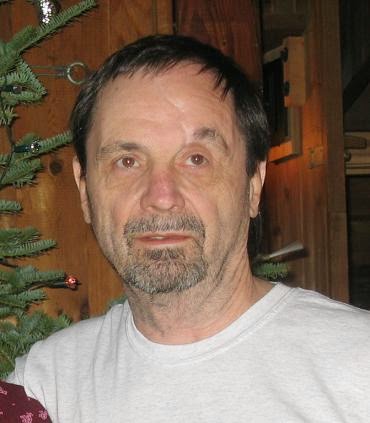Today’s Wednesday’s Guest is DL (David) Swykert, author of The Death of Anyone, a police procedural mystery set in my hometown, Detroit. As I mentioned in my review last Sunday, it was a pleasure to take a virtual trip back. I thought David might enjoy a cinnamon roll this morning with his coffee, and you are welcome to join us.
The Grim Sleeper was caught because his son’s
DNA was the closest database match to DNA samples collected at the crime scenes. Investigating Franklin‘s son led officers to investigate Lonnie David Franklin. But there was no direct DNA linking him to the crime scene until a matching DNA sample was obtained after his arrest. The admissibility issues are being thoroughly tested by defense attorneys.Many legal analysts believe Familial DNA searches violate Fourth Amendment rights which guard against unreasonable searches and seizures. The courts may ultimately rule that searching among Familial DNA databases for partial matches would be the same as the use of a generalized warrant to search someone’s house when there is no prior reason to suspect the person of wrongdoing. Our Constitution protects us from that kind of unwarranted search.
Even Thomas Callaghan, the former head of the FBI’s national
DNA database, feared that Familial Searches might be legally vulnerable, since courts might view the searches as an attempt to use samples collected for one specific purpose for a very different purpose.Just as we would consider it unreasonable to cast a wide net of suspicion without probable cause due to concerns of privacy, personal dignity, and unwanted intrusion in the lives of innocent citizens, we should be concerned the identification of a suspect through partial
DNA searches will contribute to further loss of freedoms. These are all constitutional issues that will come into play as the use of DNA science continues to progress in criminal investigations.These are the same issues confronting Detroit Homicide Detective Bonnie Benham in The Death of Anyone. Bonnie has been transferred from narcotics for using more than arresting and is working the case of a killer of adolescent girls.
CSI collects DNA evidence from the scene of the latest victim, which had not been detected on the other victims. But no suspect turns up in the FBI database. Due to the notoriety of the crimes, a task force is put together with Bonnie as the lead detective, and she implores the D.A. to use an as yet unapproved type of a DNASearch in an effort to identify the killer. Homicide Detective Neil Jensen, with his own history of drug and alcohol problems, understands Bonnie’s frailty and the two detectives become inseparable as they track this serial killer.QUESTION – Have you heard of Familial DNA testing? What do you think of the civil rights issues involved with using the results of partial DNA testing for prosecutions?




Fascinating. I never thought of using familial DNA to link a suspect to a crime but I can certainly see a lot of legal and ethical issues. I would certainly object to my DNA being used against a member of my family.
This is all so new, LD, it will be interesting to see how it plays out in the legal system. I know David is following the Grim Sleeper news, so I hope he will come back and let us know the results of that trial. Who knows, maybe he will get another book out of it.